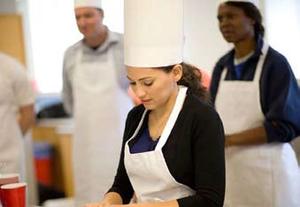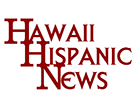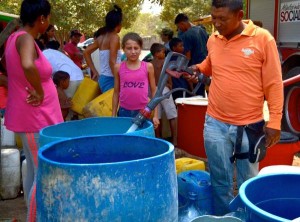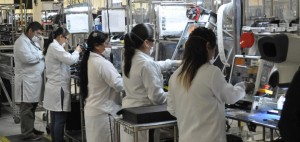By José Villa
Hawaii Hispanic News
ITHACA, New York – Dr. Yajaira Sierra-Sastre is a materials scientist and educator with ten years of research experience in academic, federal, and private institutions. She is participating in the HI-SEAS (Hawaii Space Exploration Analog and Simulation) project on the Big Island next year.
The crew has been selected from over 700 applicants, and the 120-day simulated mission is scheduled to begin in early 2013. The NASA Human Exploration & Operations Mission Directorate has identified a number of risks associated with long-term human space exploration.
Many of these can be simulated somewhere on Earth that is similar to the target space environment in relevant ways.
HI-SEAS is a planetary surface exploration site at 8,500 feet on the Mauna Loa side of the saddle area on the Big Island of Hawaii.
HI-SEAS is funded for its first season of operation focusing on new forms of food and new food preparation strategies for long-term space exploration. This first mission will involve six astronaut-like — in terms of education, experience, and attitude — crew members living in the habitat for 120 days under Mars exploration
conditions.
For example, they will experience the same: communication latencies and blackouts; stresses of living in close quarters; strict water-use rules; etc.

During our interview, she said: “I was born and raised in Arroyo, Puerto Rico – on the southeast coast of the island – and am a product of the public school education system there. I received my bachelors of science degree in chemistry and teacher’s certification from the University of Puerto Rico-Mayaguez and my doctorate in materials chemistry from Cornell University.”
Sierra-Sastre continued: “Ever since I can remember, I’ve been interested in science – all kinds of science. My father had a tremendous love and passion for science. I remember, when I was very little girl, my father would wake me up in the middle of night and we’d go out to look at the stars. His passion and excitement in observing science around us had a tremendous impact on me. Those early experiences helped me internalize the passion for science I now share.”
She went on: “My mother was an educator. I developed the love for teaching and educating our youth from her. For that reason, the first job I accepted after graduating from college was teaching chemistry and math courses at my former high school in Puerto Rico. So, in addition to my chemistry and science background, I’m also a certified high school teacher.”
How did she transition from teaching to research? She said: “After gaining valuable teaching experience, I realized I wanted to have more opportunities to engage in research. So I started looking for research opportunities for teachers. As a result, I was awarded a summer research fellowship at Stanford University where I participated in nanotechnology projects.”
At Stanford she discovered her passion for nanotechnology and returned home to work at the NASA Research Center for Nanoscale Materials at the University of Puerto Rico-Río Piedras. There she characterized nanomaterials for space-based applications. As part of her PhD studies, Sierra-Sastre also worked at the Center for Integrated Nanotechnologies at the Los Alamos National Laboratory in the synthesis, imaging, and characterization of semiconductor nanowires.
She said: “Working with nanotechnology in space applications seemed a perfect fit for me. Those early star-gazing experiences with my dad had created in me an interest in science and space exploration. From my earliest years I remember telling family members and friends that when I grew up I wanted to be an astronaut. It was a vision that I
nurtured through the years.”
Sierra-Sastre continued: “I would watch all the Space Shuttle launches, watch films about landing on the moon, and read just about anything to do with space exploration. My town in Puerto Rico didn’t have a library, so I would get most the most current information from newspaper. I would cut out articles about anything to do with NASA, space research projects and space exploration.”
She went on: “I knew to become an astronaut I first had to be a scientist, so I kept pursuing my studies of science. But in the back of mind, the vision of being an astronaut was always present. I believed my increasing science education was serving to enhance my eligibility. But I also realized that NASA didn’t have many Hispanic astronauts or Puerto Rican female astronauts. And often times the lack of role models creates doubt in our minds about the dream not coming through. Maybe being an astronaut was an unattainable goal for me, etc.”
Sierra-Sastre added: “Then something interesting happened. While doing research at the NASA Center at the University of Puerto Rico-Rio Piedras, an astronaut came to the school as a guest speaker. He told us how he was able to become an astronaut and of his many adventures. But the most important thing I heard was that he was a chemist! That was very inspiring and reignited my passion to make it happen for me.”
Was there anything else she needed in order to enhance her eligibility?
She said: “At that point, I knew I wanted to continue my career in research. I also didn’t speak a lot of English and I knew that would really limit my opportunities to work for NASA. So I decided to attend graduate school on the U.S. mainland. I applied to several schools and was fortunate enough to be accepted by Cornell University to pursue
a PhD program specializing in nanotechnology.”
She continued: “I’ve had other public- and private-sector experiences with nanotechnology. I found out about this HI-SEAS when it came out, I applied and was extremely fortunate to have been selected out of 700 applicants. The little Puerto Rican girl, who used to marvel at the stars with her dad, is taking the next step in my quest to become an astronaut.”
As she explained it, the overall purpose of this particular NASA experiment deals with food. NASA scientists have discovered that after long periods in space astronauts experience “menu fatigue.” They get tired of eating the same things and start eating less. When they eat less, they lose muscle mass, which, in turn, starts to affect their mental acuity and capacity. So the main purpose of this experiment is to come up with a wide variety of dry ingredients that can spice up the astronauts’ menus.
Does she have advice for other Latinos and Latinas who may not see role models in their dream professions?
She said: “First of all, I knew what I wanted and always kept my dream in mind. Secondly, I took an objective look at myself, acknowledged my weak areas – e.g. science and English – and worked to make up those deficits. And, most important, I searched for opportunities and applied for them. I would recommend that same strategy to anyone pursuing a dream.”
Our staff is tremendously proud of Dr. Sierra-Sastre and hope to interview her in person when she comes to Hawaii
to participate in the NASA project next year.






Comment(1)
Jose Villa
Hola Marisa: Thank you so much for sharing our story! — Jose Villa, Hawaii Hispanic News